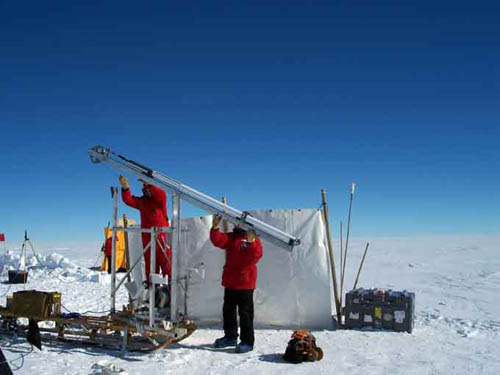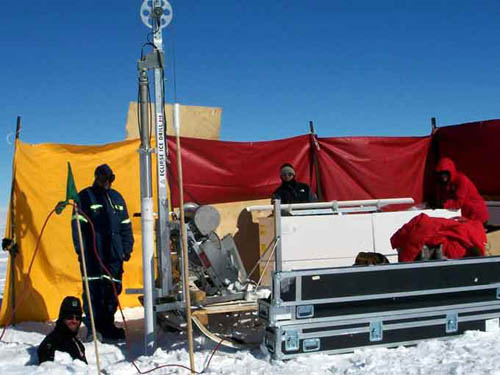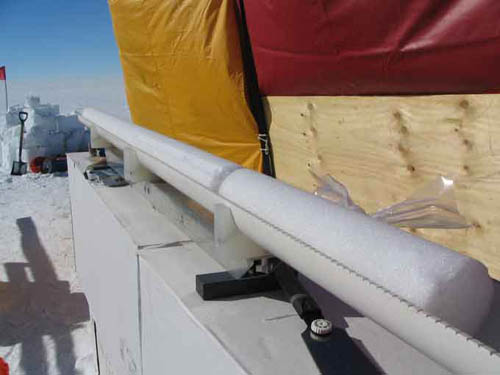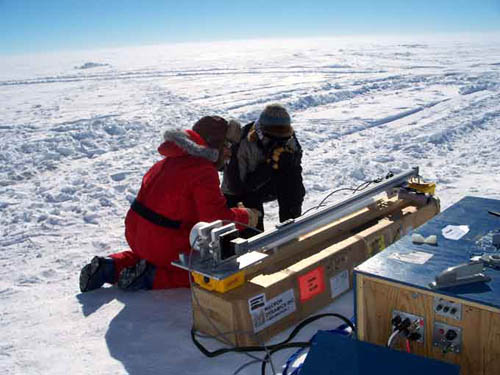On the art of drinking ice cores
 [Image: From the 2006-2007 U.S. ITASE expedition to Antarctica].
[Image: From the 2006-2007 U.S. ITASE expedition to Antarctica].Edible Geography has a fun interview up this morning with glacial scientist Paul Mayewski, director of the Climate Change Institute at the University of Maine. The interview is remarkable not only for its descriptions of the technicality of drilling, shipping, preserving, and studying ancient ice cores removed from landscapes as far afield as Greenland and Tibet, but also for Mayewski's confession that unneeded ice cores are sometimes melted down and drunk by the scientists.
 [Image: From the 2006-2007 U.S. ITASE expedition to Antarctica].
[Image: From the 2006-2007 U.S. ITASE expedition to Antarctica]."But, you know," he clarifies, "it’s not as if we have a lot of ice lying around and we drink the water on a regular basis. We are pretty careful to restrict it to pieces that we know we don’t need for any measurements, and that come from places where they could be repeated if need be. We have to be sure that they’re not valuable to anybody. And we only use them for special events—we don’t drink it very often."

 [Images: From the 2006-2007 U.S. ITASE expedition to Antarctica].
[Images: From the 2006-2007 U.S. ITASE expedition to Antarctica].These special events include wedding receptions, where shavings of ancient ice, dropped into water, bubble and pop like champagne, Mayewski explains:
- Probably the most exciting thing about it is when you have real ice—that’s where the snow has been gradually compacted and eventually formed into ice, and the density has increased. When that happens, if the ice is old, it will often trap air bubbles in it. Those air bubbles can contain carbon dioxide from ten thousand years ago or even a hundred thousand years ago. And when you put an ice cube of that ice in a glass of water, it pops. It has natural effervescence as those gas bubbles escape. You get a little a puff of air into your nostrils if you have your nose over the glass. It’s not as though it necessarily smells like anything—but when you think about the fact that the last time that anything smelled that air was a hundred thousand years ago, that’s pretty interesting.
 [Image: From the 2006-2007 U.S. ITASE expedition to Antarctica].
[Image: From the 2006-2007 U.S. ITASE expedition to Antarctica].The whole interview, though long, is a quick and good-spirited read.





Comments are moderated.
If it's not spam, it will appear here shortly!
water terroir now has a temporal as well as geographic context. http://bldgblog.blogspot.com/2009/06/water-menu.html
love this.
hmmmm....anyone thought about ancient long forgotten germs/bacteria which might infect people today. Wonder if defrosted grilled mammoth is the next hype food on the table of decadence....
bon appetite....
Don't eat the Mammoth!
...the sabertooth tiger is much better.
But seriously, it would probably be too freeze-burned to taste any good.
It does remind me of when "The Iceman" was found in the Alps and women volunteered to be inseminated with his frozen sperm.
Post a Comment